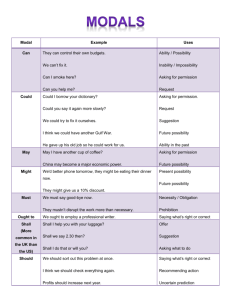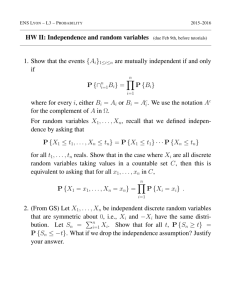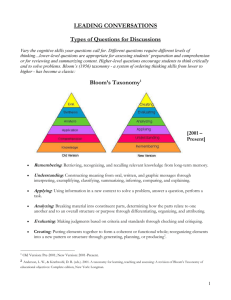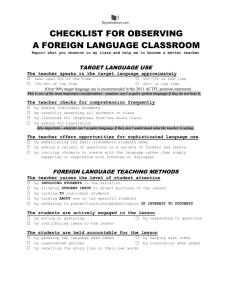Policy on Student Performance Feedback
advertisement
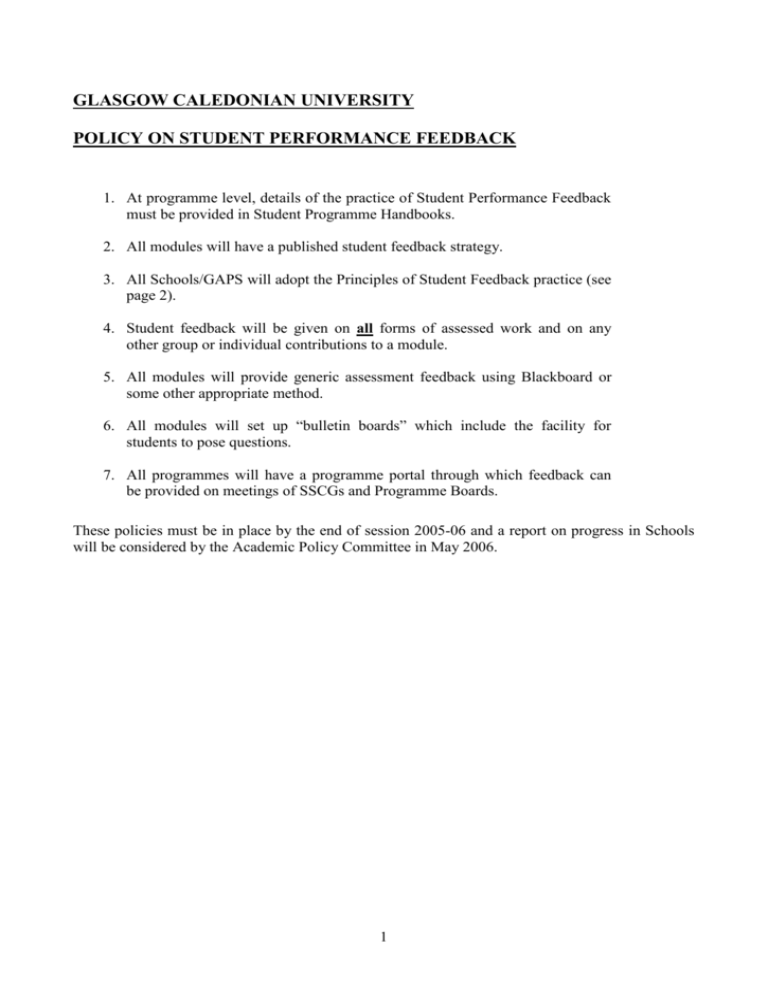
GLASGOW CALEDONIAN UNIVERSITY POLICY ON STUDENT PERFORMANCE FEEDBACK 1. At programme level, details of the practice of Student Performance Feedback must be provided in Student Programme Handbooks. 2. All modules will have a published student feedback strategy. 3. All Schools/GAPS will adopt the Principles of Student Feedback practice (see page 2). 4. Student feedback will be given on all forms of assessed work and on any other group or individual contributions to a module. 5. All modules will provide generic assessment feedback using Blackboard or some other appropriate method. 6. All modules will set up “bulletin boards” which include the facility for students to pose questions. 7. All programmes will have a programme portal through which feedback can be provided on meetings of SSCGs and Programme Boards. These policies must be in place by the end of session 2005-06 and a report on progress in Schools will be considered by the Academic Policy Committee in May 2006. 1 PRINCIPLES OF STUDENT FEEDBACK For each of the 7 principles of good feedback practice, some practical examples are presented below. These examples do not represent a comprehensive list nor is any one example mandatory. However there is an expectation that many modules will use one or more of these or alternative techniques to satisfy the principles. A: Facilitating the Development of Self-Assessment Students can be asked to: i. ii. iii. iv. v. request the kinds of feedback they would like when they hand in work; identify the strengths and weaknesses in their own work in relation to criteria or standards before handing it in for teacher feedback; reflect on their achievements and selecting work in order to compile a portfolio; set achievement milestones for a task and reflecting back on progress and forward to the next stage of action; give feedback on each other’s work (peer feedback) also helps support the development of self-assessment skills (for example, Gibbs, 1999). B: Encouraging Teacher and Peer Dialogue Good examples of feedback dialogue in class include: i. ii. iii. iv. providing feedback using one-minute papers (Angelo and Cross, 1990); reviewing feedback in tutorials where students are asked to read the feedback comments they have been given and discuss these with peers – they might also be asked to suggest strategies to improve performance next time; asking students to find one or two examples of feedback comments that they found useful and to explain how they helped. Other ways of using feedback dialogue in a planned way, for assignments, might involve: (a) having students give each other descriptive feedback on their work in relation to published criteria before submission; (b) group projects. C: Clarify Good Performance Strategies that have proved effective in clarifying criteria, standards and goals include: i. ii. iii. iv. v. vi. providing better definitions of requirements using carefully constructed criteria sheets and performance level definitions; providing students with exemplar assignments with attached feedback; increasing discussion and reflection about criteria and standards in class; involving students in assessment exercises where they mark or comment on other students’ work in relation to defined criteria and standards; workshops where students in collaboration with their teacher devise their own assessment criteria for a piece of work; combinations of the above five have proved particularly effective. D: Providing Opportunities to Close the Gap Between Current and Desired Performance Strategies for teachers that can help students use external feedback to close the gap include: i. increasing the number of opportunities for resubmission; 2 ii. iii. iv. modelling the strategies that might be used to close a performance gap in class (for example, model how to structure an essay when given a new question); writing down some ‘action points’ alongside the normal feedback they provide. This would identify for students what they should do next time to improve their performance; asking students to identify their own action points in class based on the feedback they have just received thereby integrating the process into the teaching and learning situation and involving the students more actively in the generation and planned use of feedback. E: Delivers high quality information to students about their learning Strategies that increase the quality of feedback include: i. ii. iii. iv. v. vi. vii. making sure that feedback is provided in relation to pre-defined criteria but paying particular attention to the number of criteria; providing feedback soon after a submission; providing corrective advice, not just information on strengths/ weaknesses; limiting the amount of feedback so that it is used; prioritising areas for improvement; providing online tests so that feedback can be accessed anytime, any place and as many times as students wish; focusing on students with greatest difficulties. F: Encourages positive motivational beliefs and self-esteem The implication of these studies for teaching practice is that motivation and self-esteem are more likely to be enhanced when a course has many low-stakes tasks with feedback geared to providing information about progress and achievement rather than high stakes summative assessment tasks where information is only about success or failure or about how students compare with peers. Other strategies that would help encourage high levels of motivation to succeed include: i. ii. iii. iv. providing marks on written work only after students have responded to feedback comments; allocating time for students to re-write selected pieces of work – this would help change students’ expectations about purpose; automated testing with feedback; drafts and resubmissions. G: Provides information to teachers that can be used to help shape the teaching Strategies are available to teachers to help generate and collate quality information about student learning and help them decide how to use it include: i. ii. iii. iv. v. using one-minute papers where students carry out a small assessment task and hand this in anonymously at the end of a class, such as What was the main point of this lecture? or What question remains outstanding for you at the end of this teaching session? having students request the feedback they would like when they make an assignment submission; asking students to identify where they are having difficulties when they hand in assessed work; asking students in groups to identify ‘a question worth asking’, based on prior study, that they would like to explore for a short time at the beginning of the next tutorial; quick evaluation strategies at key points in teaching. Approved by Academic Policy and Planning Committee 25 May 2005 3 4



